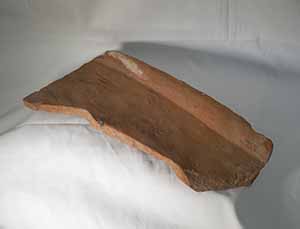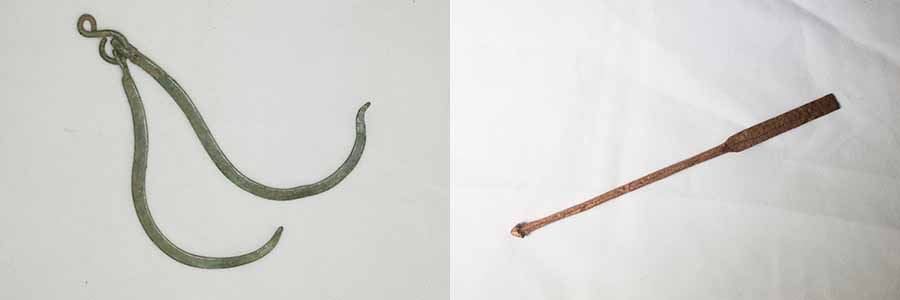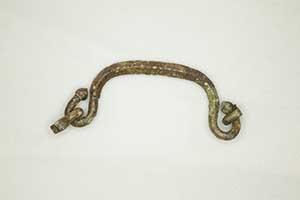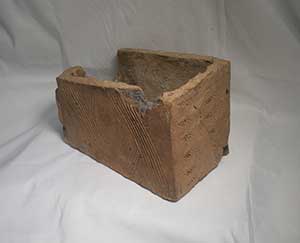Roman Bath Time
A wealthy Roman farmstead stood where Priory Lake is now.
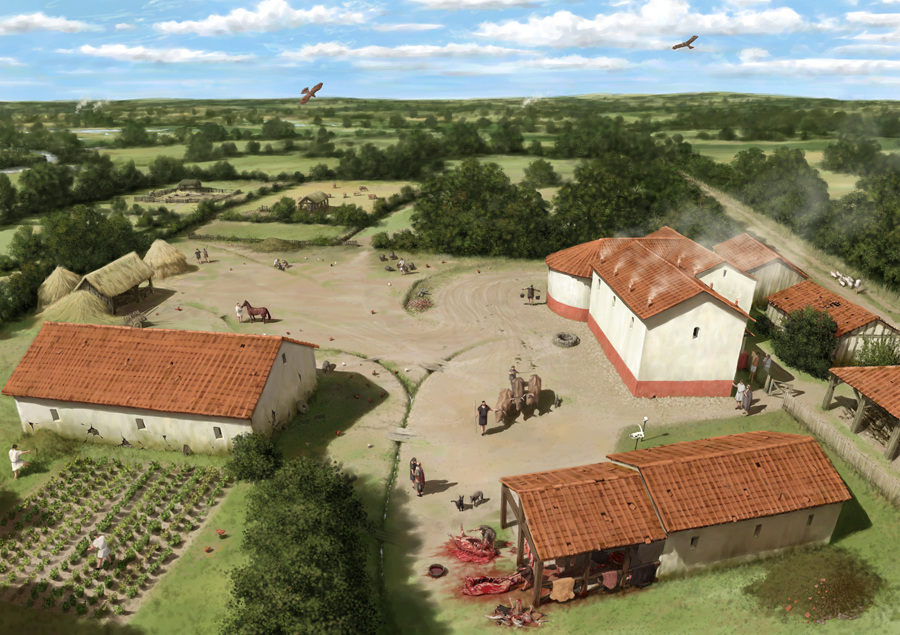 The Romano-British farmstead at the height of its wealth around 300 AD. Smoke rises from the bath house chimneys. Three medium-sized rooms had cold, warm and hot baths. Rooms were heated by hot air from a wood-fired furnace which circulated under the floor. There may have been an exercise room and a shrine. Illustration by Pete Urmston
The Romano-British farmstead at the height of its wealth around 300 AD. Smoke rises from the bath house chimneys. Three medium-sized rooms had cold, warm and hot baths. Rooms were heated by hot air from a wood-fired furnace which circulated under the floor. There may have been an exercise room and a shrine. Illustration by Pete Urmston
A 2,000-year-old farm once stood where Priory Lake is today. Iron Age farmers tended a small farmstead here before the Roman invasion of 43 AD, and this was soon replaced by a flourishing farm estate which reached its peak by 300 AD. Large stone buildings lined a courtyard where animals were butchered, and included a heated bathhouse and exercise suite!
A clay roof tile from one of the farm buildings. (Image Bill Bevan)
Well-groomed farmers
How do you clean your teeth? Residents of the farmstead used these hooks for their nails or teeth, and the copper spatula to put on their make up. (Images Bill Bevan)
Archaeologists excavated the farm in the 1970s, before commercial gravel extraction began in this area. They found enough building remains to suggest a thriving farm business with a range of buildings around a central courtyard. The buildings were made from stone with tiled roofs. Residents took care of their looks with teeth or nail-cleaning hooks and copper make-up applicators. One resident had at least one small casket for storing their things. This suggests that the people who lived here had a degree of wealth and were established in Romanised society. What the archaeologists didn’t find were the top-end luxuries usually associated with prestigious villas, such as mosaic floors.
This little handle was for a casket or chest. What do you think a resident of the farmstead stored inside? (Image Bill Bevan)
We don’t know for sure who owned and lived at the farm. Was it a family or an absentee landlord who appointed a manager to run it for him? Was this a Romano-British official or a retired Roman soldier? Whoever owned the farm, it was a much more Romanised place than the Romano-British settlement near the Great Ouse
Farming the Land
The farmers grew wheat in the surrounding fields and dried it in wood-fired driers. They kept horses for transport and dogs for hunting, security and livestock management.
The farmyard was used to butcher sheep and cows raised on the farm. The animal breeds would have been smaller than we’re used to seeing – ours have been bred for size for generations since then.
Taking the Plunge
This is a box tile from the hypocaust flue. Flues were built into the walls to carry away hot air from the under floor heating. (Image Bill Bevan)
The building with the smoking chimneys is the bathhouse. The rounded apse at the far end contained the stokehole for loading fuel to heat the water and circulate hot air through the hypocaust, an underfloor heating system. Ceramic flues took the hot air away up inside the walls to the chimneys. Roman baths were like Turkish baths or spas rather than swimming pools. There was an exercise room and a small shrine as well as three rooms at different temperatures – cold, warm and hot.
While a heated bathhouse sounds a great luxury, it was a normal part of Roman culture and doesn’t necessarily mean the farm was a high-end home. Miners and soldiers had on-site bath-suites in other workplaces. So did this bathhouse serve the estate’s tired farmworkers after a hard day’s labour?
Dig Deeper
See the remains of a typical hypocaust and how it warmed a roman bathhouse
The End and Beyond
Roman rule in Britain collapsed by 410 AD. The estate’s wealth declined and the bathhouse went out of use, but farming and sheep butchery continued. People, possibly Saxons, may have lived on the site for at least another 100 years.
Some of the original stones from the derelict farm buildings may have been re-used in building Newnham Priory 600 years later.
Visit
You can see where the Roman farm and bathhouse once stood by visiting Priory County Park.

